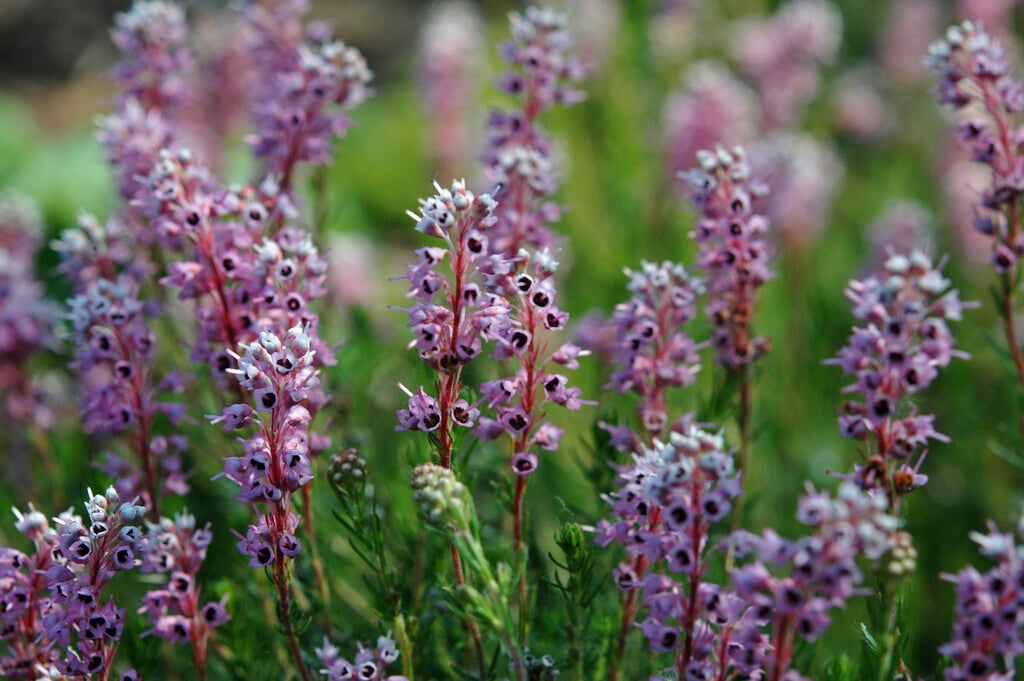Bruckenthalia spiculifolia
spike heath
A compact, low-growing shrub, with whorls of evergreen, glossy, dark green leaves along the stems. From late spring to summer, it bears clusters of small, cup-shaped, pale to deep pink, occassionally white, dense, upright flowers.

Size
Ultimate height
0.1–0.5 metresTime to ultimate height
2–5 yearsUltimate spread
0.1–0.5 metresGrowing conditions
Moisture
Well–drainedpH
AcidColour & scent
| Stem | Flower | Foliage | Fruit | |
| Spring | Pink White | Green | ||
|---|---|---|---|---|
| Summer | Pink White | Green | ||
| Autumn | Green | |||
| Winter | Green |
Position
- Full sun
Aspect
South–facing or West–facing
Exposure
Exposed or Sheltered Hardiness
H5Botanical details
- Family
- Ericaceae
- Native to GB / Ireland
- No
- Foliage
- Evergreen
- Habit
- Bushy
- Genus
Erica can be prostrate or erect, evergreen shrubs with fine, needle-like leaves in whorls, and racemes or panicles of small, bell-shaped or tubular flowers
- Name status
Correct
- Plant range
- Europe Turkey
How to grow
Cultivation
Grow in well-drained, moderately fertile soil in full sun. See also Hardy heathers cultivation.
Propagation
Propagate by semi-ripe cuttings in mid-to late autumn and by layering.
Suggested planting locations and garden types
- City and courtyard gardens
- Cottage and informal garden
- Patio and container plants
- Wildlife gardens
- Rock garden
- Low Maintenance
- Banks and slopes
- Flower borders and beds
- Ground cover
Pruning
See pruning group 10
Pests
Generally pest-free
Diseases
May be susceptible to fungal diseases, including honey fungus (rarely), and Phytophthora root rot, in wet conditions
Love gardening
Sign up to receive regular gardening tips, inspiration, offers and more
View our Privacy Policy
Get involved
The Royal Horticultural Society is the UK’s leading gardening charity. We aim to enrich everyone’s life through plants, and make the UK a greener and more beautiful place.